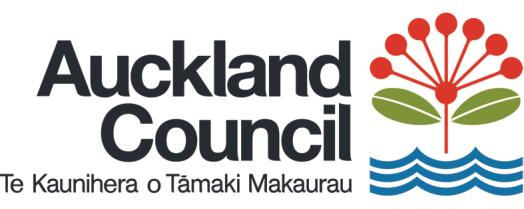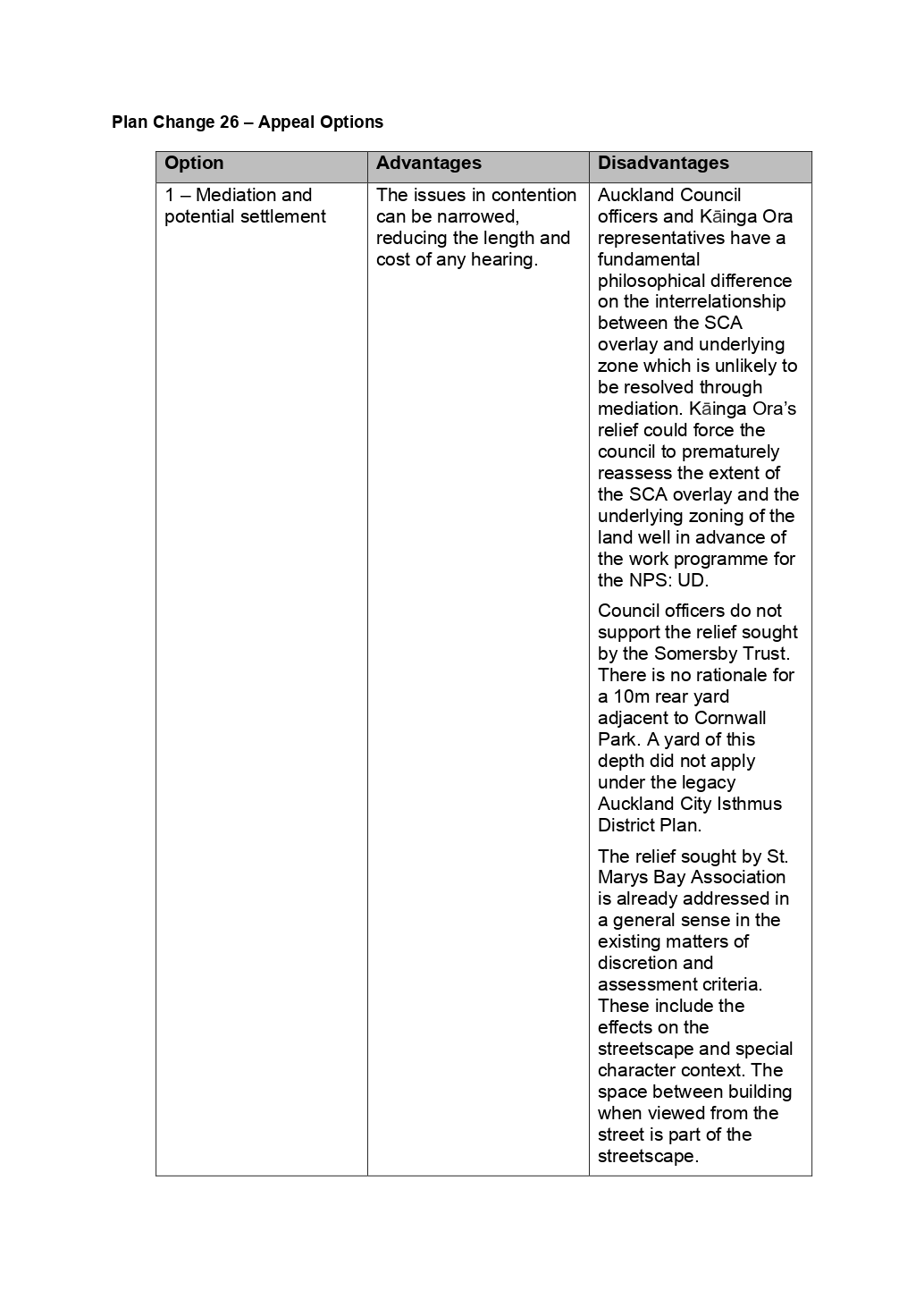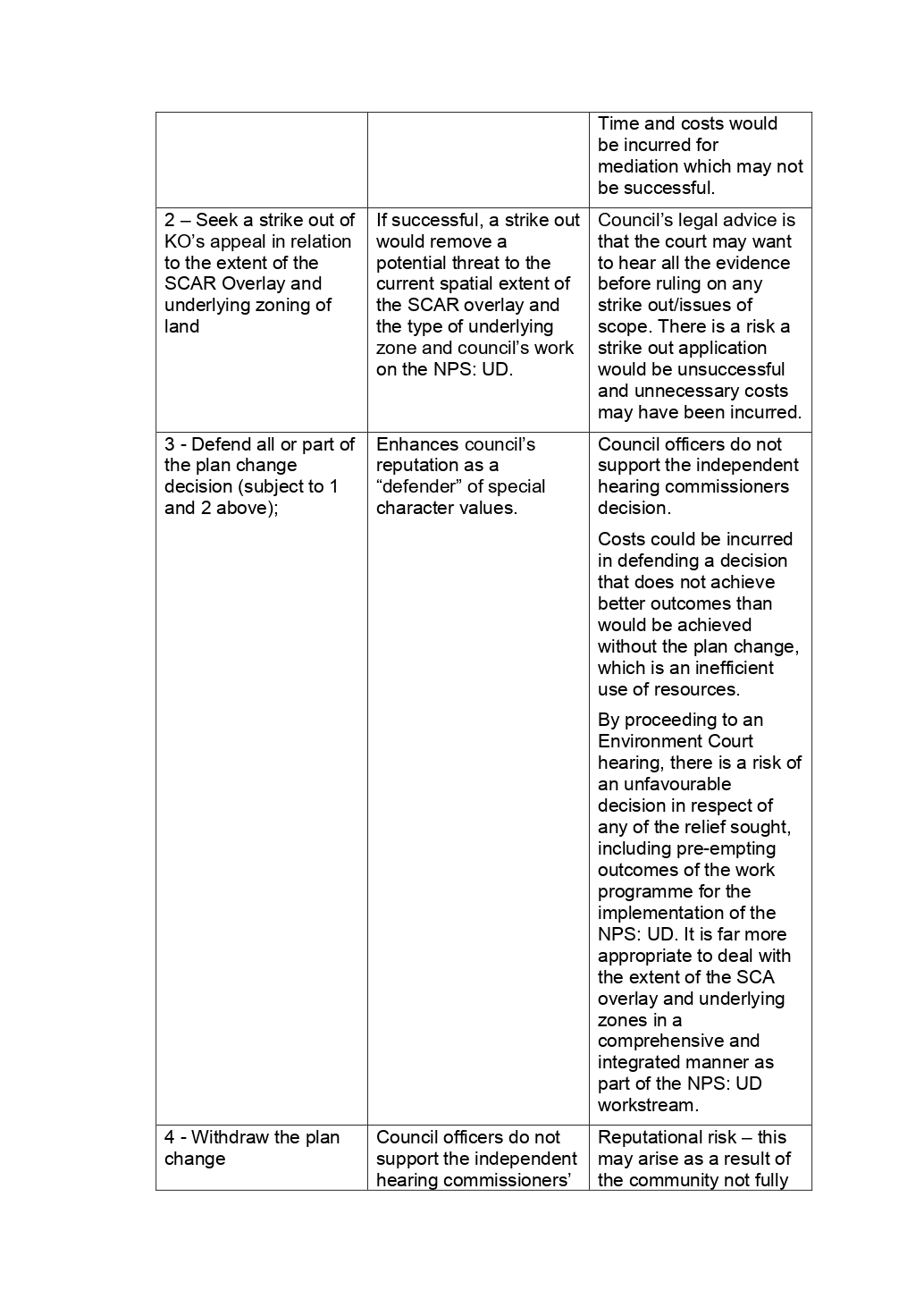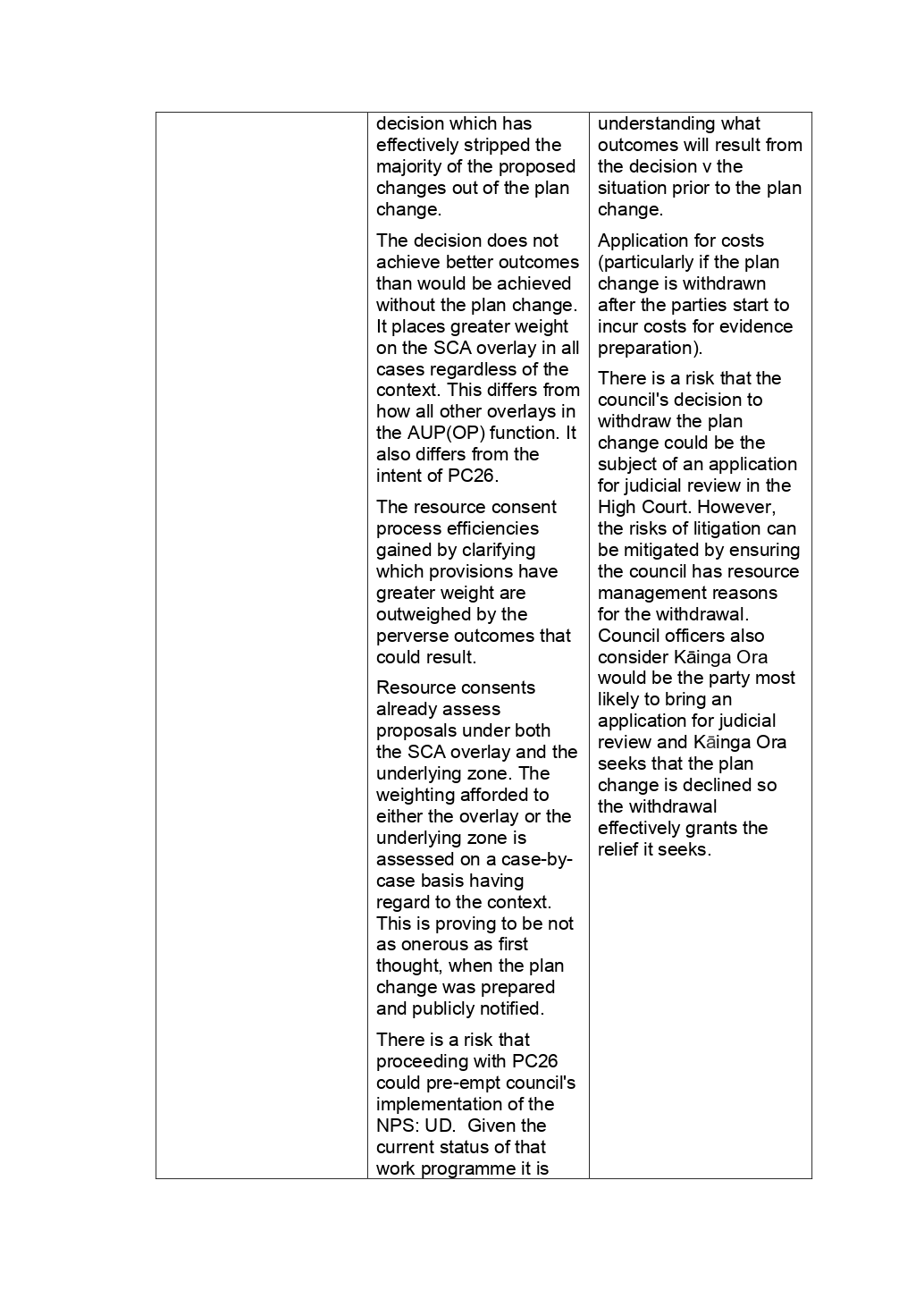link to page 3

I hereby give notice that a confidential meeting of the Planning Committee will be held on:
Date:
Thursday, 6 May 2021
Time:
10.00am
Meeting Room:
Reception Lounge
Venue:
Auckland Town Hall
301-305 Queen Street
Auckland
Kōmiti Whakarite Mahere / Planning Committee
CONFIDENTIAL AGENDA
ITEM TABLE OF CONTENTS
PAGE
C1
Auckland Unitary Plan - Plan Change 26 - Clarifying the Relationship
Between the Special Character Areas Overlay and Underlying Zone
Provisions - Appeals
3
Note: The reports contained within this agenda are for consideration and should not be construed as Council policy
unless and until adopted. Should Members require further information relating to any reports, please contact
the relevant manager, Chairperson or Deputy Chairperson.
 Planning Committee 06 May 2021
Planning Committee 06 May 2021 -
CONFIDENTIAL
Auckland Unitary Plan - Plan Change 26 - Clarifying the
Relationship Between the Special Character Areas Overlay
and Underlying Zone Provisions - Appeals
C1
File No.: CP2021/04489
Item
Matataputanga
Confidentiality
Reason:
The public conduct of the part of the meeting would be likely to result in the disclosure of
information for which good reason for withholding exists under section 7.
Interests:
s7(2)(g) - The withholding of the information is necessary to maintain legal professional
privilege.
s7(2)(i) - The withholding of the information is necessary to enable the local authority to
carry on, without prejudice or disadvantage, negotiations (including commercial and
industrial negotiations).
In particular, the report contains a recommendation on the council's approach to the
appeals received on Plan Change 26.
Grounds:
s48(1)(a)
The public conduct of the part of the meeting would be likely to result in the disclosure of
information for which good reason for withholding exists under section 7.
Te take mō te pūrongo
Purpose of the report
1.
To update the Planning Committee on the appeals received in relation to Plan Change 26 -
Clarifying the Relationship Between the Special Character Areas Overlay and Underlying
Zone Provisions.
2.
To identify the options for addressing the appeals and the advantages and disadvantages of
each option.
3.
To seek approval to withdraw Plan Change 26.
Whakarāpopototanga matua
Executive summary
4.
In 2017, the council encountered challenges to its interpretation and administration of the
Special Character Areas (SCA) overlay in relation to the Single House zone. These
challenges were in the form of verbal and written complaints, and in one example, an
application for judicial review initiated by neighbours to a development site. The appellants
claimed the council was incorrectly administering the Auckland Unitary Plan (AUP), which
had resulted in them not being considered an affected party. In response to this issue, and
an associated declaration by the Environment Court, the council-initiated Plan Change 26
(PC26).
Auckland Unitary Plan - Plan Change 26 - Clarifying the Relationship Between the Special Character
Page 3
Areas Overlay and Underlying Zone Provisions - Appeals
 Planning Committee 06 May 2021
Planning Committee 06 May 2021 -
CONFIDENTIAL
5.
PC 26 sought to clarify the relationship between the SCA overlay and the underlying zone
provisions that apply to properties within the SCA overlay. In particular, the plan change
sought to make it clear that the development standards for certain activities in the SCA
overlay “prevail over” or replace the equivalent standards for those activities in the
C1
underlying zones. This was in response to the declaration by the Environment Court that all
relevant SCA overlay – Residential (SCAR), underlying Single House zone (SHZ) and
General Rules (and any relevant objectives and policies), apply to the processing and
Item
determination of resource consent applications for any activity, without the SCA overlay
rules prevailing or cancelling out other rules.
6.
PC26 was publicly notified on 30 May 2019 and was heard by independent hearing
commissioners. The decision was publicly notified, and all submitters/further submitters
notified on 28 January 2021.
7.
In their decision, the commissioners found:
• There is no obvious conflict between the SCA overlay and SHZ objectives – they manage
the same physical resources (land and buildings) but for two different reasons;
• The AUP is operating as intended, with the SCA overlay and the underlying zone
provisions working together in an integrated manner to achieve multiple development
aspirations and outcomes;
• There is no permitted baseline in the SCA overlay because development is not permitted
and all relevant rules must be considered on each application;
• All development activities in the SCA overlay require resource consent, regardless of
compliance with the standards in either the SCA overlay or the underlying zone, and
there has been a misunderstanding of the role of development standards in assessments;
There is therefore no need to recraft the provisions of the AUP in the manner proposed
by PC26;
• Providing some clarity to plan users in relation to the standards is however appropriate
and the opportunity provided by PC26 to do that should be used;
• This is achieved by a simple provision identifying that in cases of different development
standards applying to the same activity, those in the SCA overlay “take precedence over”
those in the underlying zone in terms of the assessment, although both standards still
apply;
• A different approach to fences is warranted for front fences and corner sites – this is
because such sites have two front boundaries presenting two facades to the adjacent
streets.
8.
The decision significantly strips back much of the notified plan change. What remains is a
directive to “give precedence” or greater weight to the SCA overlay in all cases regardless of
the context. This differs from how all other overlays in the Auckland Unitary Plan function. It
also differs from the intent of PC26 which was more nuanced. In line with the Environment
Court declaration, the council’s current approach is to consider resource consent
applications under both the SCA overlay and the underlying zone provisions, and to
determine the weight given to the SCA overlay versus the underlying zone on a case-by-
case basis having regard to the local context. This is proving to be not as onerous as first
thought, when the plan change was prepared and publicly notified.
9.
Having carefully evaluated the decision, it is considered that the amended version of the
plan change provides limited improvements to the AUP, and in some respects could result in
poorer outcomes than the pre-plan change provisions.
10. Four appeals were originally received against the decision. One, by Ascot Hospitals and
Clinics has subsequently been withdrawn.
Auckland Unitary Plan - Plan Change 26 - Clarifying the Relationship Between the Special Character
Page 4
Areas Overlay and Underlying Zone Provisions - Appeals
 Planning Committee 06 May 2021
Planning Committee 06 May 2021 -
CONFIDENTIAL
11. The three remaining appeals are from:
• Kāinga Ora (seeking that PC26 be declined and all consequential amendments be made
to PC26 or to any other provisions of the Auckland Unitary Plan, including any necessary
amendments to any planning maps, to respond to the concerns set out in the notice of
C1
appeal or in the attached submissions)
• St. Mary’s Bay Association (seeking an assessment criterion be added to ensure that
consideration is given to the space between buildings to ensure that repair, maintenance
Item
and painting of the buildings is physically possible)
• Somersby Trust (seeking that the D18.6.1.3 Yards standard be amended to include a
specific requirement for a 10m minimum rear yard setback for those sites within the SCA
Overlay: Isthmus B2 which adjoin Cornwall Park and its Open Space zones).
12. In addition, there are seven section 274 notices, with five of these opposing the relief sought
by Kāinga Ora.
13. The options available to council to address the appeals are to:
• Settle some or all of the appeals through mediation and subsequent consent order(s) and
proceed to a hearing on any outstanding matters;
• Seek a strike out of Kāinga Ora’s appeal in relation to the extent of the SCA overlay and
underlying zoning of land on the basis that it is out of scope;
• Defend all or part of the plan change decision (subject to the previous two options);
• Withdraw the plan change. This must occur before an Environment Court hearing
commences.
14. There are advantages and disadvantages associated with each option. These have been
considered against the following matters:
• The ability to achieve the outcomes sought by the council in respect of special character
values
• Consistency with the way other overlays in the AUP function
• The degree of professional support for the decision amongst council planning staff
• Any potential risks, including reputational risks and risks to the current spatial extent of
the SCA overlay and the type of underlying zone.
15. Withdrawing the plan change best achieves the outcomes sought for special character
values. It means that the SCA overlay will function in the same manner as all other overlays
in the AUP. This approach is supported by the council’s resource consents and policy
planning staff (as compared to the approach in the decision version of PC 26). It is also
more appropriate and efficient to consider the extent of the SCA overlay and the underlying
zoning of the land in a comprehensive and integrated way as part of the work programme for
implementing the National Policy Statement on Urban Development 2020. The appeal by
Kāinga Ora puts this approach at risk.
16. There are some reputational risks involved with the withdrawal, but these can be managed
by clear communication of the reasons for the council’s decision. There is also the ability for
appellants to seek costs on the withdrawal, but that option also exists with an Environment
Court hearing and can be managed by withdrawing PC26 at an early stage prior to
mediation and before the other parties incur the costs of evidence preparation.
Auckland Unitary Plan - Plan Change 26 - Clarifying the Relationship Between the Special Character
Page 5
Areas Overlay and Underlying Zone Provisions - Appeals
 Planning Committee 06 May 2021
Planning Committee 06 May 2021 -
CONFIDENTIAL
Ngā tūtohunga
Recommendation/s
That the Planning Committee:
C1 a) withdraw Plan Change 26 - Clarifying the Relationship Between the Special Character Areas
Overlay and Underlying Zone Provisions under clause 8D of the First Schedule of the
Item
Resource Management Act 1991 (RMA) for the following reasons:
i)
overall, the decision version of Plan Change 26 does not achieve better outcomes
than can be achieved without the plan change;
ii)
the resource consent process efficiencies gained by clarifying which provisions have
greater weight are outweighed by the outcomes that could result if greater weight is
always afforded to the Special Character Areas overlay provisions;
iii)
the council’s resource consent practice was adjusted after the
Budden Environment
Court declaration and the approach adopted is proving to be not as onerous for both
applicants and the council as first thought, when the plan change was prepared and
publicly notified;
iv)
the appeals are unlikely to be resolved without proceeding to a hearing. Costs would
be incurred in defending the decision on Plan Change 26, which is an inefficient use of
resources given the decision does not achieve better outcomes; and
v)
Kāinga Ora’s appeal raises issues regarding the relevance of the National Policy
Statement on Urban Development to the geographical extent of the Special Character
Areas overlay. It is far more appropriate to deal with the extent of the Special
Character Areas overlay and underlying zones in a comprehensive and integrated
manner as part of implementing the National Policy Statement on Urban Development
than through the Plan Change 26 appeal process.
Restatement
b)
agree that the agenda report should remain confidential, and that the resolutions remain
confidential until all the appeals on Plan Change 26 are resolved.
Horopaki
Context
Background
17. In 2017, the council encountered challenges to its interpretation and administration of the
Special Character Areas (SCA) overlay in relation to the Single House zone. These
challenges were in the form of verbal and written complaints, and in one example, an
application for judicial review initiated by neighbours to a development site. The appellants
claimed the council was incorrectly administering the Auckland Unitary Plan, which had
resulted in them not being considered an affected party.
18. In response to this uncertainty between the council, resource consent applicants and
potentially affected parties, council filed an application for declaration with the Environment
Court with the intention that the declarations sought would provide useful ongoing guidance
to all parties.
19. The Court’s decisions on the declaration proceedings determined that the provisions of the
SCA overlay did not act as a “replacement package”, prevailing over the provisions of the
underlying Single House zone zone. Rather, that all provisions (objectives, policies and
rules) relevant to an activity must be applied.
Auckland Unitary Plan - Plan Change 26 - Clarifying the Relationship Between the Special Character
Page 6
Areas Overlay and Underlying Zone Provisions - Appeals
 Planning Committee 06 May 2021
Planning Committee 06 May 2021 -
CONFIDENTIAL
Proposed Plan Change 26
20. Plan Change 26 (PC 26) proposed a series of amendments to the AUP, and was, in part, a
response to the Environment Court’s declarations in respect of
Auckland Council v Budden1
regarding the relationship between the SCA overlay and the Single House zone.
C1
21. There are a number of instances where there are equivalent provisions (activities and
standards) in both the SCA overlay and the underlying zones, which was resulting in conflict
and inconsistency between each set of (zone and overlay) provisions. This was causing
Item
uncertainty and unnecessary complexity in terms of processing resource consent
applications; and most fundamentally meant the SCA overlay was not achieving its
objectives. The council did however respond quickly to the
Budden declaration and it
became accepted practice to assess both the SCA overlay and the underlying zone
provisions.
22. PC26 sought to clarify that where there are corresponding provisions (including activities
and standards) in the SCA overlay and in the underlying zone, the provision in the SCA
overlay wil “prevail over” or replace the corresponding provision in the underlying zone. The
council was also seeking to refine some of the standards within the SCA overlay, including
height in relation to boundary, yards, paved areas and fences.
23. PC26 was publicly notified on 30 May 2019. 274 submissions were received and 23 further
submissions. Broadly, there were an equal number of submissions in support and opposition
to the proposed plan change. The hearing by independent commissioners took place on 24
and 28 July 2020. Various site visits were undertaken by the commissioners during July
2020 and the decision was released on 28 January 2021.
Decision by the Independent Hearing Commissioners
24. The commissioners found:
• There is no obvious conflict between the SCA overlay and Single House zone objectives
– they manage the same physical resources (land and buildings) but for two different
reasons;
• The AUP is operating as intended, with the SCA overlay and the underlying zone
provisions working together in an integrated manner to achieve multiple development
aspirations and outcomes;
• There is no permitted baseline in the SCA overlay because development is not permitted
and all relevant rules must be considered on each application;
• All development activities in the SCA overlay require resource consent, regardless of
compliance with the standards in either the SCA overlay or the underlying zone, and
there has been a misunderstanding of the role of development standards in assessments;
There is therefore no need to recraft the provisions of the AUP in the manner proposed
by PC26;
• Providing some clarity to plan users in relation to the standards is however appropriate
and the opportunity provided by PC26 to do that should be used;
• This is achieved by a simple provision identifying that in cases of different development
standards applying to the same activity, those in the SCA overlay take “precedence over”
those in the underlying zone in terms of the assessment, although both standards still
apply;
• A different approach to fences is warranted for front fences and corner sites – this is
because such sites have two front boundaries presenting two facades to the adjacent
streets.
1
Auckland Council v Budden [2017] NZEnvC 209 (‘interim decision’) issued 19 December 2017. The
decision was further clarified in the Court’s second interim decision issued on 23 January 2018 as
Auckland
Council v Budden (No 2) [2018] NZEnvC 003 (‘second decision’) and in the third decision issued on 15
March 2018
Auckland Council v Budden (No 3) [2018] NZEnvC 030 (‘third decision’).
Auckland Unitary Plan - Plan Change 26 - Clarifying the Relationship Between the Special Character
Page 7
Areas Overlay and Underlying Zone Provisions - Appeals
 Planning Committee 06 May 2021
Planning Committee 06 May 2021 -
CONFIDENTIAL
25. As a result of the decision, much of the PC26 proposed wording was rejected.
The Appeals and Section 274 Notices
26. Four appeals were originally received against the decision. One, by Ascot Hospital and
C1
Clinics has subsequently been withdrawn.
27. The three remaining appeals are from:
Item
• Kāinga Ora - seeking that PC26 be declined and all consequential amendments be made
to PC26 or to any other provisions of the Auckland Unitary Plan, including any necessary
amendments to any planning maps, to respond to the concerns set out in the notice of
appeal or in the attached submissions.
• St. Mary’s Bay Association - seeking an assessment criterion be added to ensure that
consideration is given to the space between buildings to ensure that repair, maintenance
and painting of the buildings is physically possible.
• Somersby Trust - seeking that the D18.6.1.3 Yards standard be amended to include a
specific requirement for a 10m minimum rear yard setback for those sites within the SCA
Overlay: Isthmus B2 which adjoin Cornwall Park and its Open Space zones.
28. There are eight section 274 notices, although one of these is no longer applicable as it
relates to the withdrawn Ascot Hospital and Clinics Limited’s appeal.
29. The section 274 notices are:
• P. Ng on Kāinga Ora (opposes relief sought)
• Sampson Corporation Ltd and Sterling Nominees Ltd on Kāinga Ora (opposes relief
sought)
• South Epsom Planning Group on Kāinga Ora (opposes relief sought)
• K. Vernon on Kāinga Ora (opposes relief sought)
• R.L. Donaldson on Kāinga Ora (opposes relief sought)
• Kāinga Ora on St Mary’s Bay Association (opposes relief sought)
• Kāinga Ora on Somersby Trust (opposes relief sought)
• Kāinga Ora on Ascot Hospital and Clinics Limited (this section 274 notice is no longer
applicable as the appeal has been withdrawn).
30. The appeals and section 274 notices are available on Auckland Unitary Plan pages of the
Auckland Council website (under Auckland Unitary Plan changes, etc – PC 26).
31. The council has indicated to the Environment Court that it is willing to participate in court
assisted mediation. That is typically the council’s position on appeals. A date for mediation is
currently being investigated by the court.
Tātaritanga me ngā tohutohu
Analysis and advice
Options Available in Respect of the Appeals
32. The council has the following options available in respect of the appeals:
1.
Settle some or all of the appeals through mediation and subsequent consent order(s)
and proceed to a hearing on any outstanding matters.
2.
Seek a strike out of Kāinga Ora’s appeal in relation to the extent of the SCA overlay
and the underlying zoning of land on the basis that it is out of scope.
3.
Defend all or part of the plan change decision (subject to 1 and 2 above).
4.
Withdraw the plan change. Council should have resource management reasons in
support of the withdrawal of PC26.
Auckland Unitary Plan - Plan Change 26 - Clarifying the Relationship Between the Special Character
Page 8
Areas Overlay and Underlying Zone Provisions - Appeals
 Planning Committee 06 May 2021
Planning Committee 06 May 2021 -
CONFIDENTIAL
33. Clause 8D of the First Schedule to the RMA enables a council to withdraw a plan change:
(1) Where a local authority has initiated the preparation of a policy statement or plan, the
local authority may withdraw its proposal to prepare, change, or vary the policy statement or
plan at any time—
C1
(a) if an appeal has not been made to the Environment Court under clause 14, or the appeal
has been withdrawn, before the policy statement or plan is approved by the local authority;
or
Item
(b) if an appeal has been made to the Environment Court, before the Environment Court
hearing commences.
(2) The local authority shall give public notice of any withdrawal under subclause (1),
including the reasons for the withdrawal
34. The resource management advantages and disadvantages associated with each of the
above options are set out in
Attachment A.
35. The relief sought by Kāinga Ora includes consequential amendments to PC26 or to any
other provisions of the AUP, including any necessary amendment to any planning maps to
respond to the concerns set out in the appeal. Kāinga Ora’s relief could force the council to
prematurely reassess the extent of the SCA overlay and the underlying zoning of the land
well in advance of its work on the National Policy Statement on Urban Development. A
worst-case scenario is that the court could adopt Kāinga Ora’s zoning and overlay maps. It
is far more appropriate to review the extent of the SCA overlay and underlying zones as part
of the work programme for the National Policy Statement on Urban Development and
investigating any changes in a comprehensive and integrated manner.
36. Having considered the advantages and disadvantages of each option, including the risk
associated with the appeal by Kāinga Ora, it is recommended that option 4 is taken and
PC26 is withdrawn ahead of any mediation or Environment Court hearing.
37. While there is a risk of an application for judicial review in the High Court of a decision to
withdraw PC26, there are sound resource management grounds for the proposed
withdrawal.
38. Lessons learnt from the PC26 process can be factored into the National Policy Statement on
Urban Development work, the future review of the SCA overlay and underlying zone and
future plan changes in general. The independent commissioners’ decision did have useful
observations on the preparation of section 32 reports.
Tauākī whakaaweawe āhuarangi
Climate impact statement
39. The resolution of any appeals and/or the withdrawal of the plan change is neutral in terms of
climate impacts.
40. It is also noted that at present s70A of the Resource Management Act 1991 (RMA)
specifically prohibits Auckland Council from making rules in the Auckland Unitary Plan
regarding or considering the climate change effects of any greenhouse gas emissions.
41. The RMA Amendment Act 2020 will alter assessments of environmental effects for
applications considered after 31 December 2021. This is the date from which s70A of the
RMA shall be repealed, requiring a consideration of climate change effects from the
discharges of greenhouse gases.
42. As this matter has been decided on prior to 31 December 2021, s70A still applies and
therefore the Auckland Unitary Plan cannot contain rules considering the climate change
effects from any greenhouse gas emissions.
Auckland Unitary Plan - Plan Change 26 - Clarifying the Relationship Between the Special Character
Page 9
Areas Overlay and Underlying Zone Provisions - Appeals
 Planning Committee 06 May 2021
Planning Committee 06 May 2021 -
CONFIDENTIAL
Ngā whakaaweawe me ngā tirohanga a te rōpū Kaunihera
Council group impacts and views
43. Staff within the council’s Resource Consents department have been consulted on the
C1
options for resolving the PC26 appeals. They support the withdrawal of PC26. Resource
consents staff already assess proposals under both the SCA overlay and the underlying
zone. The weighting afforded to either the overlay or the underlying zone is assessed on a
Item
case-by-case basis having regard to the context. This is proving to be not as onerous as first
thought, when the plan change was prepared and publicly notified.
44. PC 26 does not affect the functions and responsibilities of the Council Controlled
Organisations.
Ngā whakaaweawe ā-rohe me ngā tirohanga a te poari ā-rohe
Local impacts and local board views
45. Local board views were obtained on PC26 during its preparation. These views formed part
of the Section 42a hearing report. Given the time constraints, local board views have not
been sought on the options for addressing the appeals and the recommended option.
However, nothing in the feedback from local boards to date would suggest a preference for
any of the alternative options to withdrawing the plan change.
Tauākī whakaaweawe Māori
Māori impact statement
46. All iwi were consulted during the preparation of the plan change. No submissions were
received from iwi on the plan change. The technical changes sought through the PC 26
appeals are neutral in terms of their impact on Māori.
47. Reviewing the geographic extent of the SCA overlay and underlying zones (as sought by
Kāinga Ora) will be of strong interest to Māori. However, the opportunity for Māori to be
involved in any such review does not exist as part of the PC 26 appeals process. The
opportunity wil exist through the council’s work on the National Policy Statement on Urban
Development.
Ngā ritenga ā-pūtea
Financial implications 48. Withdrawal of PC26 at this stage will reduce any further costs associated with the plan
change. If the council was to proceed to mediation and an Environment Court hearing,
additional costs would be incurred. These would include the costs of expert witnesses and
legal representation. Successful appellants could also possibly seek costs (although the
Environment Court's Practice Note 2014 indicates that costs are not normally awarded to
any party in respect of plan appeals that proceed to a hearing).
49. As a result of the withdrawal of the plan change, appellants may seek costs. The most
significant issues have been raised by Kāinga Ora. The primary relief sought by Kāinga Ora
is that PC26 be declined. The withdrawal of the plan change effectively meets this relief.
50. If an early decision is made to withdraw the plan change, appellants and the council would
not have gone through the expense of attending mediation and preparing evidence.
Auckland Unitary Plan - Plan Change 26 - Clarifying the Relationship Between the Special Character
Page 10
Areas Overlay and Underlying Zone Provisions - Appeals
link to page 13 link to page 13
 Planning Committee 06 May 2021
Planning Committee 06 May 2021 -
CONFIDENTIAL
Ngā raru tūpono me ngā whakamaurutanga
Risks and mitigations
51. There is no risk to achieving the outcomes sought by the SCA overlay if the option to
withdraw the plan change is chosen. The council already assesses proposals under both the
C1
SCA overlay and the underlying zone. The weighting afforded to either the overlay or the
underlying zone is assessed on a case-by-case basis having regard to the context.
52. A greater risk is reputational and the perception that council has “given up” on the
Item
management of special character values. This may arise as a result of the community not
fully understanding what outcomes will result from the decision versus the situation prior to
the plan change. This risk can be mitigated by good communications at the time of the
withdrawal of the plan change.
53. By proceeding with the Plan Change, there is a risk of an unfavourable decision from the
Environment Court. This is particularly significant in respect of Kāinga Ora’s appeal.
Ngā koringa ā-muri
Next steps
54. The process for withdrawing the plan change is set out in clause 8D of the First schedule of
the RMA. Under that section, “
the local authority shall give public notice of any withdrawal
under subclause (1), including the reasons for the withdrawal”.
55. If the council resolves to withdraw the plan change, council’s legal advisors wil immediately
advise the court, the appellants and section 274 parties of its decision to do so.
Ngā tāpirihanga
Attachments
No.
Title
Page
A⇩
Plan Change 26 - Appeal Options
13
Ngā kaihaina
Signatories
Author
Tony Reidy - Team Leader Planning
Authorisers
John Duguid - General Manager - Plans and Places
Megan Tyler - Chief of Strategy
Auckland Unitary Plan - Plan Change 26 - Clarifying the Relationship Between the Special Character
Page 11
Areas Overlay and Underlying Zone Provisions - Appeals

 Planning Committee 06 May 2021
Planning Committee 06 May 2021 -
CONFIDENTIAL
C1
Item
A
ent
hm
ac
Att
Auckland Unitary Plan - Plan Change 26 - Clarifying the Relationship Between the Special Character
Page 13
Areas Overlay and Underlying Zone Provisions - Appeals

 Planning Committee 06 May 2021
Planning Committee 06 May 2021 -
CONFIDENTIAL
C1
Item
A
ent
hm
ac
Att
Auckland Unitary Plan - Plan Change 26 - Clarifying the Relationship Between the Special Character
Page 14
Areas Overlay and Underlying Zone Provisions - Appeals

 Planning Committee 06 May 2021
Planning Committee 06 May 2021 -
CONFIDENTIAL
C1
Item
A
ent
hm
ac
Att
Auckland Unitary Plan - Plan Change 26 - Clarifying the Relationship Between the Special Character
Page 15
Areas Overlay and Underlying Zone Provisions - Appeals

 Planning Committee 06 May 2021
Planning Committee 06 May 2021 -
CONFIDENTIAL
C1
Item
A
ent
hm
ac
Att
Auckland Unitary Plan - Plan Change 26 - Clarifying the Relationship Between the Special Character
Page 16
Areas Overlay and Underlying Zone Provisions - Appeals
Document Outline

















